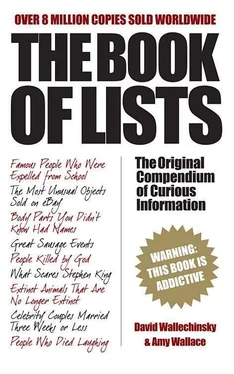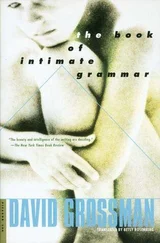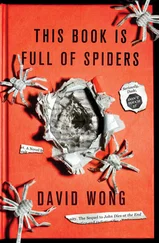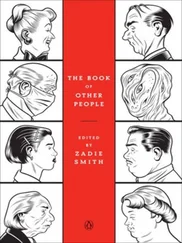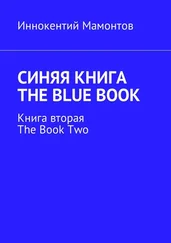23. DEADLY WHITE POWDER
On Saturday, July 10, 1976, the citizens of Seveso, Italy, were startled by a sudden loud whistling sound coming from the direction of the nearby Icmesa chemical factory. The sound was followed by a thick, grey cloud, which rolled towards the town and dropped a mist of white dust that settled on everything and smelled horrible. It was 10 days before the people of Seveso learned that the white dust contained dioxin, a deadly poison far more dangerous than arsenic or strychnine. By then it was too late. The effects of dioxin poisoning had already begun. The area was evacuated, surrounded by barbed wire and declared a contaminated zone. All exposed animals were killed, ugly black pustules formed on the skin of young children, babies were born deformed, and older people began to die of liver ailments. The full extent of the tragedy has still not been felt.
24. SPACE JUNK
In September, 1962, a metal object about 6 in. in diameter and weighing 21 lb crashed into a street intersection in Manitowoc, Wisconsin, and burrowed several inches into the ground. The object was later identified as part of Sputnik IV, which had been launched by the USSR on May 15, 1960. Since 1959 approximately 9,000 parts of spacecraft have fallen out of orbit, and many of them have reached the surface of the Earth. On July 11, 1979, Skylab, the 77-ton US space station, fell out of orbit over the South Indian Ocean and western Australia. The largest piece of debris to reach land was a one-ton tank.
25. THE LARGEST METEORITE
The largest known iron meteorite, weighing more than 60 tons, crashed to Earth in late 1920, landing on a farm in the Hoba district west of Grootfontein in northern Namibia. It has since been declared a national monument and is visited by more than 20,000 tourists a year. A minor international incident occurred in 1989 when 36 Malaysian soldiers serving in a UN peacekeeping force tried to cut pieces from the boulder for souvenirs.
26. HUMAN WASTE
On Sunday, October 18, 1992, Gerri and Leroy Cinnamon of Woodinville, Washington, were watching a football game on TV in their den with Gerri’s parents when something crashed through the roof of their living room. ‘I expected to see Superman soar through the hole,’ said Leroy. Instead they found several baseball-sized chunks of greenish ice. As it melted, it began to smell bad. Two days later the Federal Aviation Administration confirmed that the Cinnamons’ roof had been damaged by frozen human waste from a leaky United Airlines sewage system. ‘It’s a good thing none of us was killed,’ reflected Leroy. ‘What would you put on the tombstone?’
Unfortunately, falls of waste blobs are not uncommon. On April 23, 1978, for example, a 25-lb chunk landed in an unused school building in Ripley, Tennessee. Other attacks have occurred in Denver and Chicago. And then there’s the story of the unfortunate Kentucky farmer who took a big lick of a flying Popsicle before he discovered what it was.
27. NON-DAIRY CREAMER
White powder of a more innocuous kind began falling on the small town of Chester, South Carolina, in 1969 — shortly after the Borden company started production of a corn syrup-based non-dairy creamer in its local plant. Whenever the plant’s exhaust vents clogged, the creamer spewed into the air and landed on people’s homes and cars. Although basically harmless, the powder would mix with dew and rain and cause a sticky mess. Said homeowner Grace Dover, ‘It gets on your windows and you can’t see out. It looks like you haven’t washed your windows for a hundred years.’ In 1991 Borden paid a $4,000 fine for releasing Cremora beyond plant boundaries. By that time the company had already taken steps to reduce the low-fat rain.
PHILIP PULLMAN’S 10 BEST TOOLS, AND ONE MORE
Philip Pullman is one of the world’s great storytellers and his trilogy , His Dark Materials, the adventures of Lyra Belacqua and her friend Will Parry in a richly imagined alternative universe, has been widely acclaimed . The Amber Spyglass, the final book in the trilogy , was the first children’s book to win the Whitbread Book of the Year Award . A stage adaptation of the three books was an enormous success at the National Theatre in 2004 .
Born in Norwich in 1946, Philip Pullman grew up to become a teacher. Unable at first to afford the tools he wanted, he turned to writing as the alternative to a life of crime. His greatest unfulfilled ambition is to present woodworking programmes on satellite TV. He is reasonably presentable and articulate, and open to offers.
1. THE TORMEK GRINDER
It’s no good trying to use edge tools that are blunt, so you have to keep them sharp. Of all the ways I’ve tried, this is the best. An ordinary electric bench grinder spins the stone around at such a speed that the steel you’re trying to sharpen gets easily overheated and loses its power to hold an edge. The Tormek grinder overcomes that by having a large wheel revolving fairly slowly in a trough of water and an ingenious system of jigs that slip on to the tool rest and hold the chisel, or the gouge, or the scissors, or the carving knife, at exactly the right angle to the stone. It produces the sharpest, most reliable edge you can get.
2. THE JAPANESE PULL SAW
It’s so obvious: a saw that cuts on the pull stroke instead of the push. The advantage is that you can have a much thinner blade, because it doesn’t have to be stiff, and that means that you can cut a much narrower kerf much more accurately. It cuts dovetails very well.
3. THE BLOCK PLANE
This is a little plane that you hold with one hand. I have two of them, but the one I use most often is a metal one: a Record. It’s satisfyingly heavy for such a small thing and beautifully designed: there’s a hollow in the top of the throat-adjustment knob for your forefinger so that you can press on the front end and guide it more firmly, and hollows on the sides for your thumb and middle finger, and the lever cap curls over precisely to fit the palm of your hand. You can adjust the depth of the blade and the width of the throat, and it’s ideal for planing end-grain. I found that the thing that made most difference (apart from keeping the blade razor-sharp: see ‘The Tormek grinder’, above) was grinding the sole until it was as smooth and flat as a mirror. Now it just glides over the wood.
4. THE TRY SQUARE
My favourite is a little metal engineer’s try square with a 4-in. blade. If you need a long one, use a long one; but this is adequate for most jobs, and it slips very neatly into the pocket, and it feels good in the hand. I bought it from the Gloucester Green market in Oxford, where there are a couple of stalls that sell second hand tools.
5. THE GOUGE
This is a chisel with a blade that’s curved in cross-section. The ones I use for carving have a bevel ground on the outside so you can scoop out a hollow. Sharpening on its own isn’t enough for these delicate and high-bred creatures: you have to hone the bevel till it shines. Fortunately, the Tormek (see above) has a leather wheel especially designed for that. Once it’s so sharp that it hurts the eye to look at it, the gouge will slice through the wood with nonchalant accuracy.
6. THE CARVER’S CHOPS
‘Chop’ has the same origin as ‘chap’, which means jaw or cheek. It’s a heavy wooden vice that holds a big workpiece for carving. I made mine out of beech, following a plan by the excellent and learned Anthony Dew, founder and president of the Guild of Rocking Horse Makers.
7. THE X-ACTO KNIFE
In combination with a steel straightedge and a rubber cutting mat, this is unbeatable. Card, paper, leather, even thin plywood all succumb.
Читать дальше
